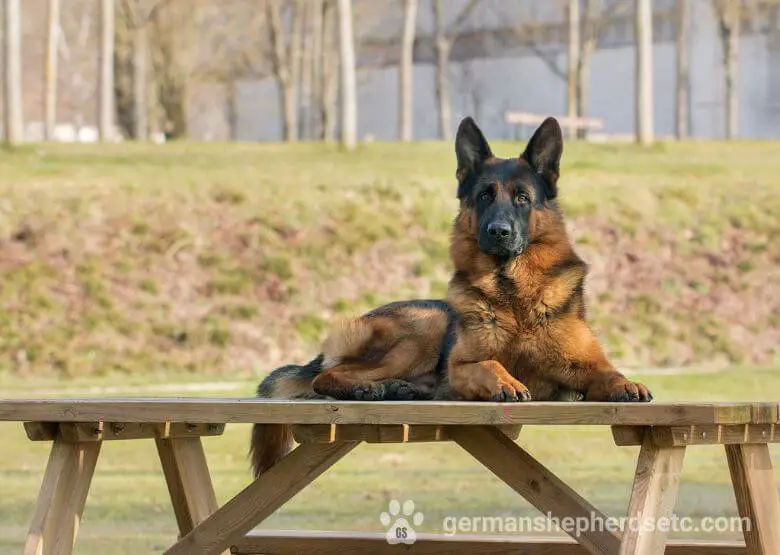Table of Contents
Since the late 1800s, German Shepherds have always been enjoying a lot of popularity. This wonderful breed was initially developed for herding, but now, they are used for guarding, guiding, and protection. These dogs are very intelligent, obedient, loyal, and agile. They can work in the police, military, disability and rescue services, and in many other jobs.
Different working lines were bred, and the West working line German Shepherd is one of them. The other well-known lines are East German, American German, and Czech Shepherds, though western dogs are considered among the best. During the continuous breeding process, the West German Shepherds developed two lines – the West working line and the West show line. They are different in their characteristics and temperament, though they are believed to be the closest to the initial breed developed by Max von Stephanitz. They have a distinct look and comply with all the breed standards.
These animals have a strong working drive and great personalities, making them stand out from other breeds. They are healthy, energetic, and very active. We want to discuss these and many other characteristics to help you understand whether this breed is right for you.
History of Western German Shepherd Dogs
The West German Shepherd show line is the most prominent contribution of many breeders to the development of GS working lines. We have indicated that these dogs are the closest to the original characteristics created by Max von Stephanitz. The color and body shape remained exactly the same, so they are considered standard for the entire breed.
Most people have always been choosing a West German Shepherd for its working qualities, however, it can also become a great family pet if all the members understand its needs and are active enough to provide their doggy an interesting and energetic lifestyle.
The history of this line continued after WWII, when Germany was divided into West and East parts, and the Cold War started. The line was developing in two different ways because of different approaches toward breeding. Therefore, West German Shepherds and East German Shepherds appeared.
The differences were mostly related to the living conditions in both countries divided by the Iron Curtain. The East German line was bred as a more aggressive breed to serve in the military and police. They served as aggressive Scouters and attackers of those who wanted to climb over the Berlin Wall and escape from East Germany. West German dogs were meant for shows. So, the differences between the two lines became more distinctive.
Characteristics of a Western German Shepherd
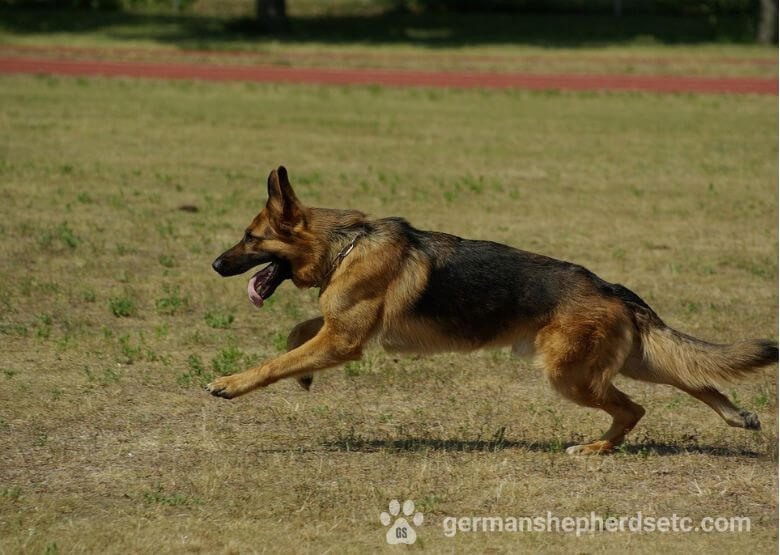
The coat colors of the West German Shepherd dogs are different. They can be black-and-red, black-and-tan, sable, pure black, or bi-colored. Black and red is the most common color for this line.
The most distinctive feature of these dogs is their sloped back, though it is not as prominent as in American German Shepherds. Nevertheless, West Germans are bred to comply with the breed standards for show. Other physical features, such as muscular build and distinctive height, are also very important. It can be up to 26 inches (66 cm), adding much to their regal appearance. The West German Shepherd size account for making crates bigger for keeping these dogs as home pets.
These German Shepherds also have thick paws and shorter hind legs. Their overall body shape is well-balanced and proportional, and it makes the dog handsome and admirable.
Western Shepherds need a healthy diet rich in protein, fiber, fats, vitamins, and minerals to preserve their fascinating appearance and fitness. High-quality protein taken from beef, pork, fish, chicken, or lamb is the main ingredient of their food. You can also add grains, eggs, vegetables, and legumes, which are also rich in protein. These dogs can sometimes have dairy products, nuts, and fruits in their diets but not too many.
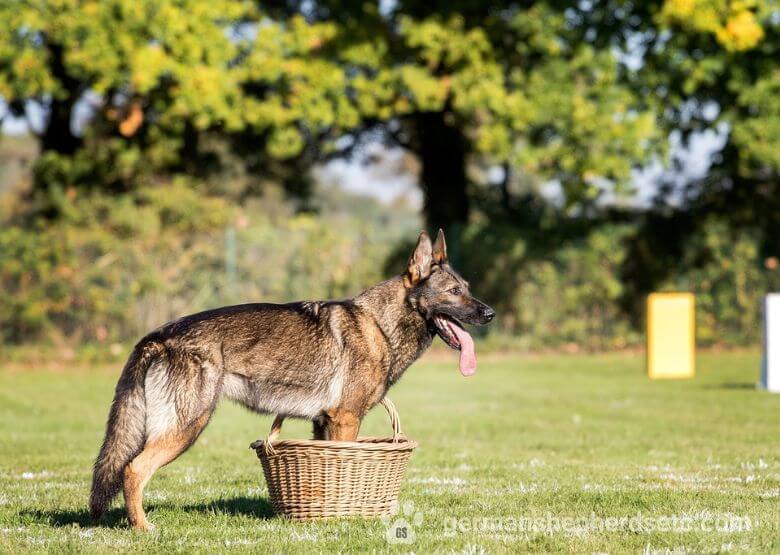
You can feed your doggy with dry food, but it should be of a premium brand. You can also feed it with a dry and wet food blend, choosing among homemade, freeze-dried, and dehydrated variants.
The diet should meet the needs of your pet’s weight, size, energy, lifestyle, and age. Anyway, it has to contain all the necessary nutrients to keep your dog healthy and active. Be careful not to overfeed your pet and avoid too many treats, especially at the age of 4-7 months when its bones and joints are developing. Table scraps are also inappropriate for such dogs.
You should keep your dog active because a lot of playing and exercising is crucial for this breed. Try to feed your doggy at regular times and always consult a vet if you have doubts about its feeding or activities.
The Main Differences Between West Working Line and Showline German Shepherds
The west showline German Shepherd differs greatly from its working-line counterpart by temperament. These dogs are affectionate, protective, and loyal. They are very social and friendly and can become true friends and perfect companions after appropriate training. They pick new skills very quickly and stay calm and loving with all the people and animals in the family. They are very energetic, too, so they need a lot of physical and mental stimulation and exercise to prevent boredom.
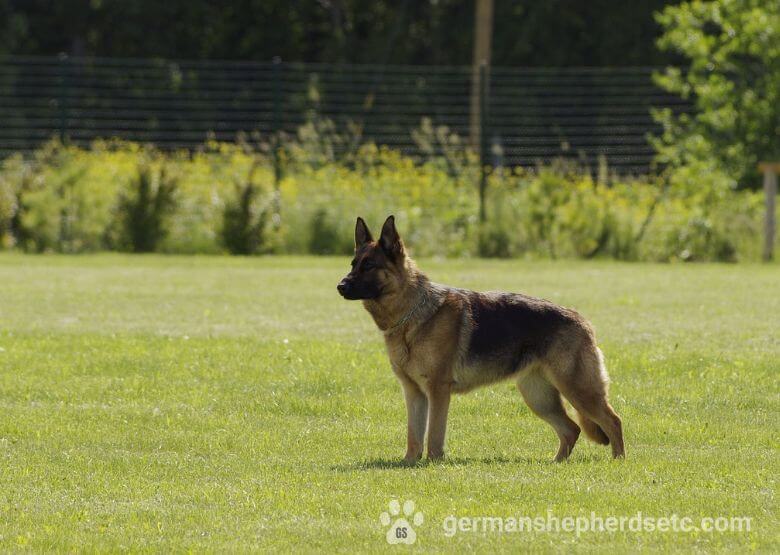
The West German Shepherd working line representatives are fearless and agile. They have a high tolerance for pain and an immense working drive. The appropriate training helps them stay calm and watchful in unfamiliar and stressful situations, so they are perfect for military and police work. Their trainability is lower than in showline West Shepherds. They need a strong leader to direct their boundless energy properly.
If we compare the health of both West German Shepherds’ representatives, the working-line dogs are healthier. Though, inbreeding can lead to hereditary problems with hips and joints. Hip dysplasia is common among such animals. So, proper feeding is vital, and regular exercising can maintain their physical health.
Both showline and working-line West German Shepherds shed a lot. You need to brush the coat regularly to remove excess hair. This breed is not for you if you cannot stand dog fur in the house. You also need to trim their nails because overgrown nails can cause trouble while walking and running. Clean your dog’s ears to prevent infections.
Both working-line and showline West GSDs can become excellent home pets. Showline dogs are better for this role because they are calmer and sweeter. These animals are easy to train and good at dealing with children and pets. However, your family needs to be pretty active to meet your doggy’s running and exercising requirements.
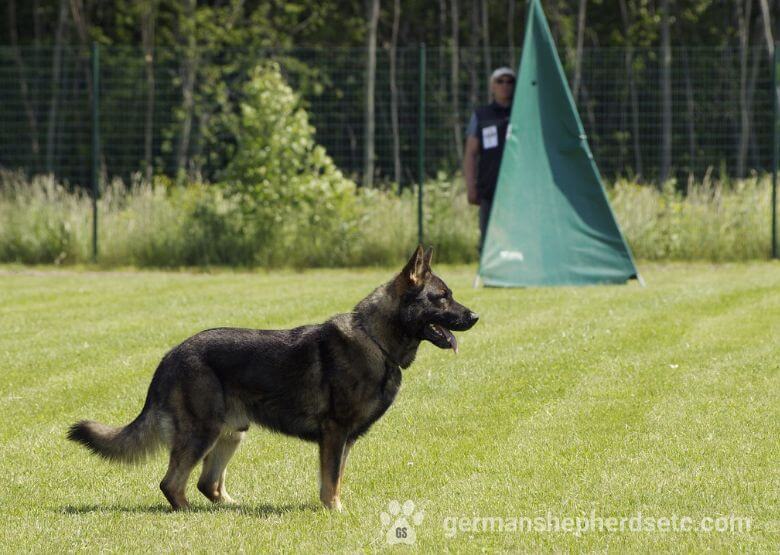
Working-line dogs can be a bit more aggressive because they have a high protective and prey drive than show lines. They can even bite people around or harm your child that is playing with them. So, such doggies are good for guarding property and house protection, but their high energy and hunting instincts do not allow them to become perfect family pets.
If you want to take a West German Shepherd as your family pet, try to learn more about its line and personality characteristics to be sure that you are making the right choice.
The Main Differences Between East vs. West Working Line German Shepherd Dogs
Comparison of East and West working line German Shepherd dogs is important for understanding this breed.
East German Shepherds are also known as DDR Shepherds (the abbreviation of Deutsche Demokratische Republik). A heavy and intimidating look, a flat back, a large and blocky head, and large bones characterize these dogs. They have a lean build, much energy, and drive for work.
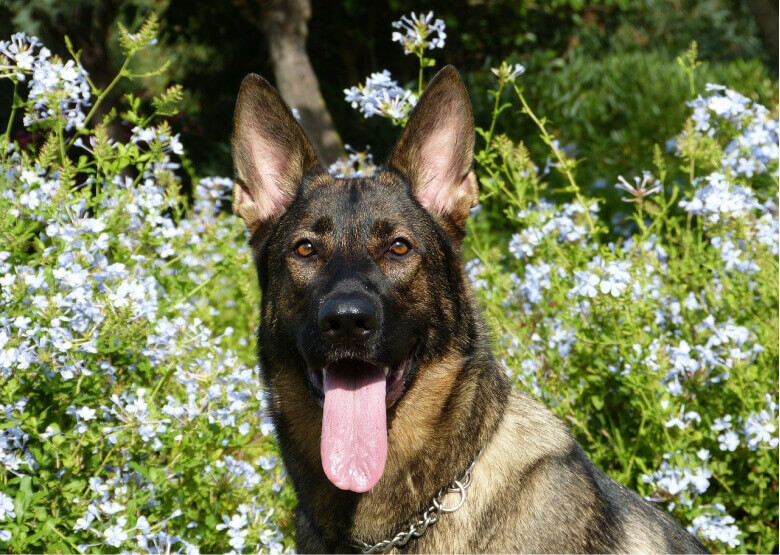
These dogs were bred to enhance their working abilities, so they are healthier than showline dogs and should be kept busy all the time to avoid their destructive behavior.
West German Shepherds are different in many aspects from DDR dogs. They can be both working and showline. Most animals of this type are showline Shepherds nowadays. They are bred to strike with their perfect appearance and personality. However, they do not have the same strength and working drive as DDRs. They are energetic enough to become great guards and protectors but do not have much courage and stamina to do more complicated and stressful jobs.
Their back slope is more projected than in East Shepherds but not as much distinctive as in their German American counterparts. They like to be busy and have a lot of energy for that, but they can become wonderful family pets because of their friendliness, loyalty, and calmness.
FAQ
How much is a Western German Shepherd?
Since this line is often used as working dogs, the average cost of puppies is about $1,500-$2,000. The showline Western GSDs may cost even more – $2,000-$3,000, depending on the breeder’s reputation and the purity of pedigree.
What is the difference between West and East German Shepherds?
The main difference is their body – East German Shepherds have a straight back without any slope and long, strong hind legs. West-type dogs have a slightly sloped back, and shorter and more angled hind legs. West German Shepherds are often used as showline dogs, so a sloped back is a result of special breeding. There is a temperamental difference, too. Since East German Shepherds were mostly bred for working in the military and law enforcement, they are more alert and aggressive. Due to different breeding conditions and purposes, West GSDs, even those belonging to a working line, are milder and more obedient.
Are West German Shepherds good family dogs?
You can adopt a West German Shepherd and make it a family pet if your life is active and you have a lot of time to spend with your pup and train it. Many experts do not recommend taking working-line dogs as family pets. Their main purpose is to guard; they can be aggressive to strangers or even your children running in front of it. The latter can happen if you do not properly train and socialize your dog.
However, if your lifestyle is not too active, and you do not have much space in the backyard for your dog’s running and exercising, or if you spend much time at work, adopting a West working-line German Shepherd or a Western German Shepherd belonging to a showline is strongly not recommended. You can take a showline dog instead if you are ready to raise, exercise, and train it properly.
Final Thoughts
If you need a great protector and guard for your home, the West working line German Shepherd is a perfect choice. However, if you want to have an excellent family pet, opt for a showline West German Shepherd.
Remember the differences between East and West German Shepherds. The first is not suitable for the role of a family pet, though the West German Shepherd working line representative can become a loyal friend and companion if you are energetic enough to meet its exercise needs. However, if you are interested in your doggy’s participation in shows, you’d better look for a showline GSD.
Therefore, you need to decide before you adopt a German Shepherd and make it a part of your family. Your choice depends a lot on your plans and needs.
